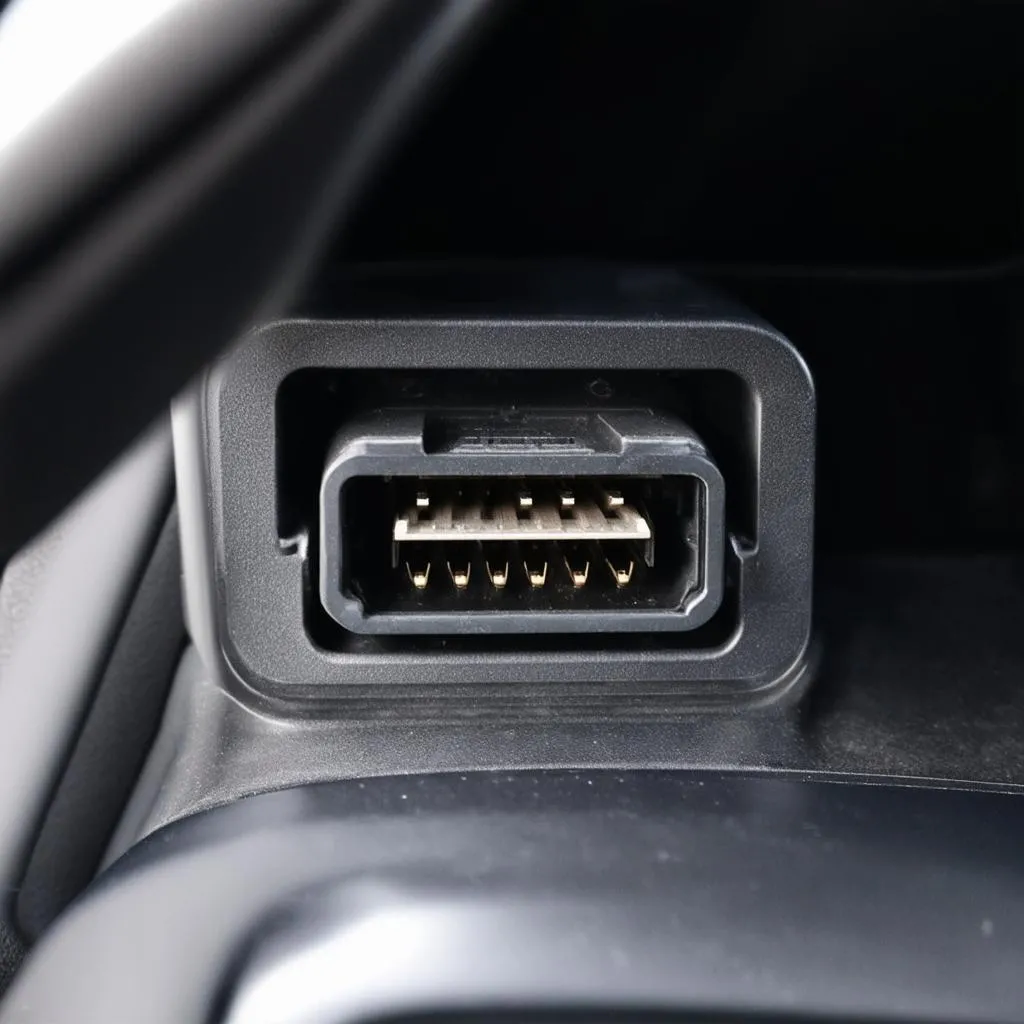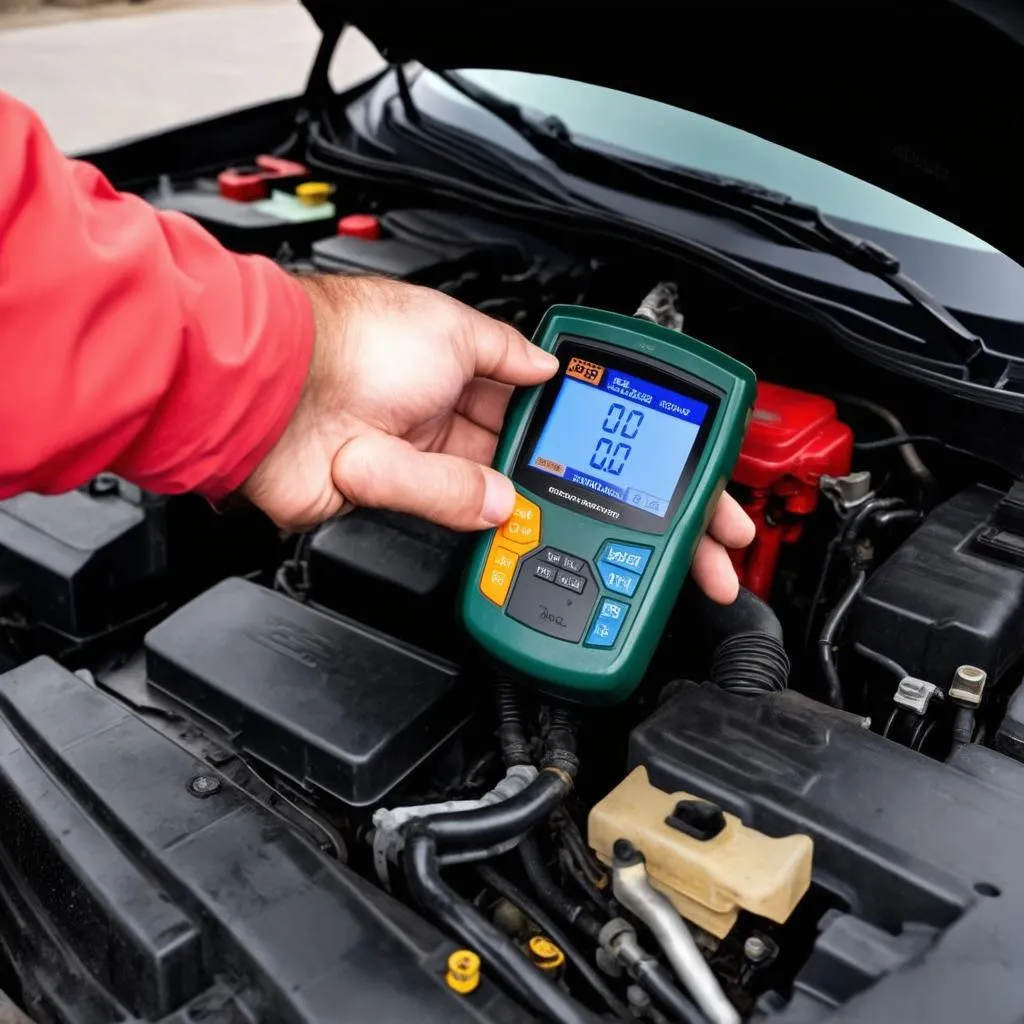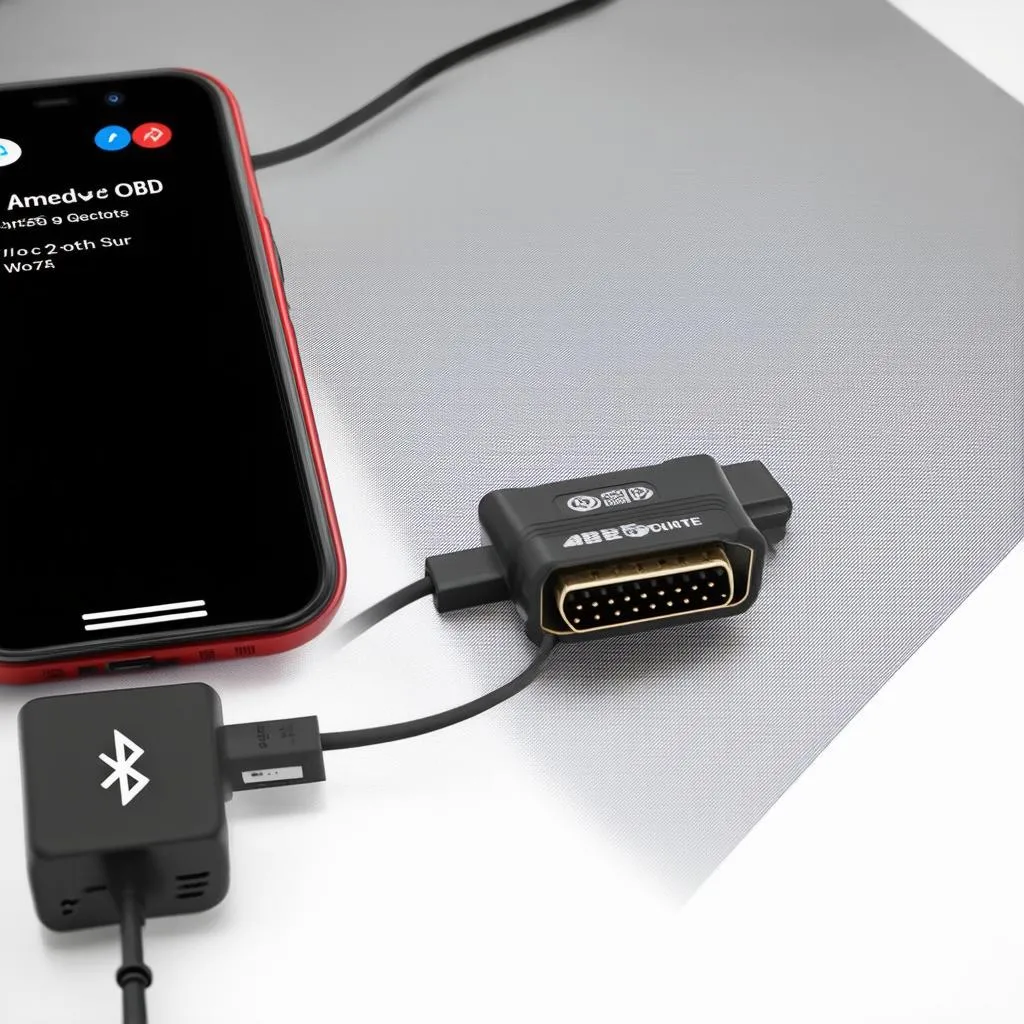Ever felt lost and frustrated when the “Check Engine” light flickers on your dashboard? You’re not alone. Many drivers experience this unsettling feeling, wondering what’s wrong with their car and how to fix it. The good news is that technology has given us a powerful tool: the Obd Ii Diagnostic Interface.
The Significance of the Obd Ii Diagnostic Interface: Unlocking the Mysteries of Your Car
The OBD II Diagnostic Interface, often referred to as the “OBD II port”, is a standardized connector found in most cars manufactured after 1996 in the United States and after 2001 in the European Union. It’s like a secret doorway that unlocks a treasure trove of information about your vehicle’s health. Think of it as the “black box” of your car, storing valuable data that can help you identify and address potential problems before they escalate into major breakdowns.
The Power of Data: How the Obd Ii Diagnostic Interface Works
The OBD II Diagnostic Interface allows communication between your car’s computer (the Engine Control Unit – ECU) and a compatible device, such as a diagnostic scanner or a smartphone app using a Bluetooth OBD II adapter. This communication happens through a language known as the OBD II protocol, which uses specific codes to relay information.
Decoding the Language of Your Car: Understanding Diagnostic Trouble Codes (DTCs)
When your car’s ECU detects a malfunction, it records a Diagnostic Trouble Code (DTC). This code is a combination of letters and numbers that act as a unique identifier for the specific issue. Using a diagnostic scanner, you can retrieve these codes and interpret their meaning. Many online resources, such as those provided by techcarusa.com, can help you understand the DTCs and provide potential solutions.
Unlocking the Potential: The Many Uses of the Obd Ii Diagnostic Interface
The OBD II Diagnostic Interface is more than just a troubleshooting tool. It can be used for various purposes, including:
1. Troubleshooting and Repair:
- Identifying and diagnosing engine issues: The OBD II Diagnostic Interface can detect a wide range of engine problems, from faulty sensors to emission control issues.
- Resetting the “Check Engine” light: Once you’ve addressed the underlying issue, you can use the OBD II Diagnostic Interface to reset the light and ensure your car is functioning correctly.
- Monitor engine performance: You can access valuable data like engine RPM, fuel consumption, and coolant temperature, helping you optimize performance and fuel efficiency.
2. Performance Tuning and Customization:
- Adjusting engine settings: With the right tools and knowledge, you can use the OBD II Diagnostic Interface to fine-tune engine parameters, improving acceleration and fuel economy.
- Accessing real-time data: Monitor vehicle performance metrics like engine load, throttle position, and boost pressure, offering insights into your car’s operation.
3. Data Acquisition and Vehicle History:
- Retrieve vehicle history: Access information about past maintenance, repairs, and even accidents, providing valuable insights into your car’s past.
- Record and analyze driving data: The OBD II Diagnostic Interface can help you track driving habits, mileage, and fuel consumption, enabling you to optimize your driving style for better efficiency.
Frequently Asked Questions about Obd Ii Diagnostic Interface
Q: What does OBD II stand for?
A: OBD II stands for On-Board Diagnostics II. It’s the second generation of onboard diagnostic systems, designed to improve vehicle emissions and provide a standard interface for troubleshooting and diagnostics.
Q: Do all cars have an OBD II port?
A: Most cars manufactured after 1996 in the United States and after 2001 in the European Union have an OBD II port. However, older vehicles may have a different diagnostic system.
Q: How do I find the OBD II port on my car?
A: The OBD II port is typically located under the dashboard, near the steering wheel. Refer to your car’s owner’s manual for the exact location.
Q: What kind of diagnostic scanner do I need?
A: There are various OBD II diagnostic scanners available, ranging from basic code readers to advanced professional-grade tools. The best option for you will depend on your specific needs and budget.
Unlocking the Mystery: The Obd Ii Diagnostic Interface – Your Vehicle’s Secret Weapon
The OBD II Diagnostic Interface is a powerful tool that gives you unprecedented access to your car’s health and performance data. From basic troubleshooting to advanced performance tuning, it offers a wide range of possibilities. Understanding this technology can help you make informed decisions about your vehicle’s care and maintenance, ultimately saving you time, money, and frustration.
Need Help? We’re Here For You!
Don’t hesitate to reach out if you have any questions about the OBD II Diagnostic Interface, diagnostic scanners, or need help with your car’s electrical system. Our team of experts is available 24/7 to provide assistance and guidance. Contact us on WhatsApp: +84767531508.
 obd-ii-port-location
obd-ii-port-location
 obd-ii-scanner-with-car
obd-ii-scanner-with-car
 obd-ii-app-on-smartphone
obd-ii-app-on-smartphone
Continue Your Journey: Explore More on techcarusa.com
For more information on OBD II Diagnostic Interface and related topics, explore these informative articles:
Let us know your thoughts and experiences with the OBD II Diagnostic Interface in the comments below. Share your questions, tips, and insights with other readers. Together, we can unlock the mysteries of automotive technology!